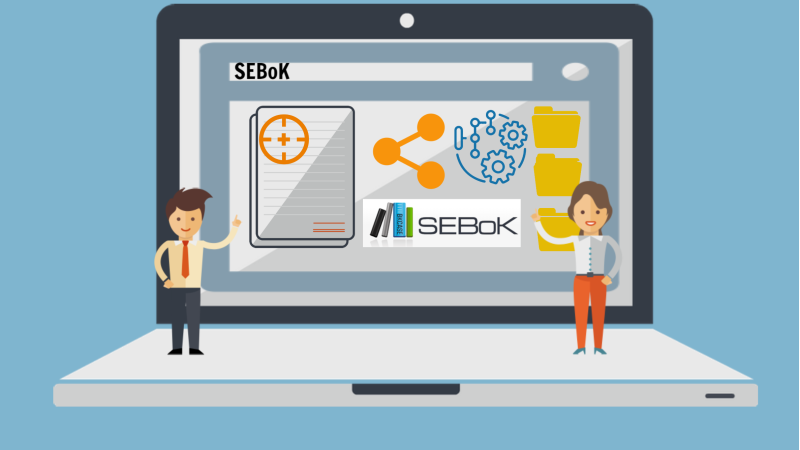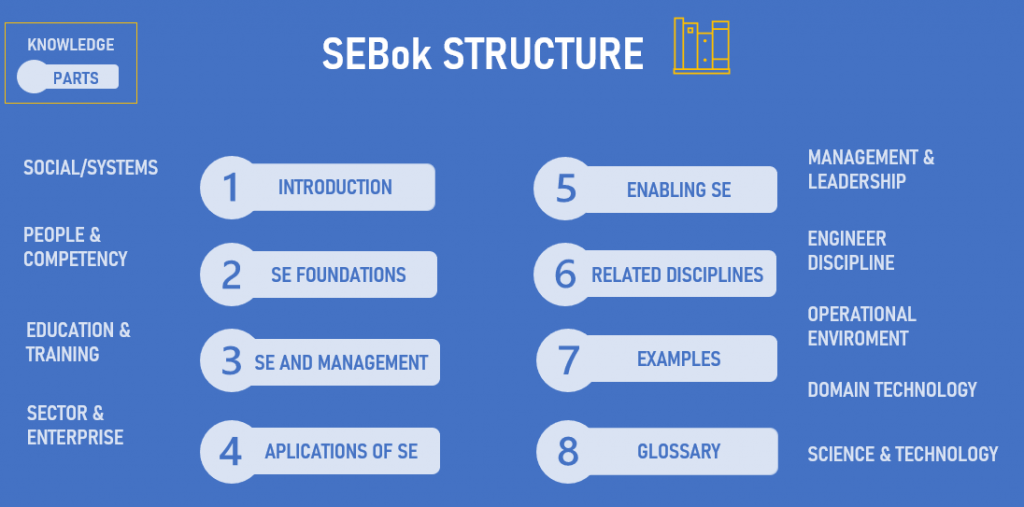SEBoK

SEBoK’s Early Days
When addressing SEBoK’s origin, it is to say that it was created in San Diego by a group of 70 authors from dozens of companies, universities and government agencies around the world, who thought about the need to have references about systems engineering for students, teachers, certifiers and interested people. It took them 3 years (2009-2012) to create the final version.
In September 2010 came out the first prototype (v.0.25) which consisted on a simple document. The authors planned to publish the final versions online on January 2011, but in the end, a newer version came in (v.50) and the platform evolved to a wiki based one. Finally, the definitive version was available for the public in September 2012 (online).
That same year, SEBoK was named product of the year by the International Council on Systems Engineering. Since then, the guide has had several revisions and updates. In October 2016, version 1.7 was released with a new Healthcare Systems Engineering knowledge area and the most recent version is v.2.1, released on October 31st, 2019.
So, in sum, SEBoK is a great resource that intends to help a wide variety of users. It is considered as a living product, accepting community input continuously, with regular refreshes and updates. Long story short, SEBoK is like a virtual encyclopaedia where everything about systems engineering is collected, being super helpful to those new to systems engineering because it contains introductory articles that provide an overview of this area, placed in historical context and with discussions about its economic value. It includes its foundations and possible applications in several areas (management, education, technology, science, health, leadership…).

How to Use SEBoK at its best
When entering the SEBoK official page, we can observe that its layout is similar to Wikipedia, which can help us to understand the function of this guide. But differing form it, in this case it is not an open source, so not everybody can edit it or add new information. To make changes, a trial and test process is to be performed, and a lot of documentation, reviews and discussions will be needed.
Then, the Editorial Board accepts or rejects the new inputs before uploading them to the public. Furthermore, the SEBoK is supervised by the Governing Board appointed by the administrators. These contribute resources to manage the SEBoK wiki, encourage SEBoK adoption and support new releases. Moreover, they are part of the INCOSE (International Council on Systems Engineering Website), the Systems Engineering Research Centre, and the IEEE Computer Society.
This guide outstands for being incredibly easy to use, and it even contains some information about how to read the SEBoK and how to cite it correctly. The encyclopaedia also includes a glossary of terms and a list of primary references with links into other bodies of knowledge.
SEBoK is divided into 7 parts;

Although this illustrates the organic order that SEBoK follows, we thought it would be helpful and more enjoyable to change the sequence, starting from the more obvious applications, to the most unexpected yet useful ones.

@SEBoK, #business, #design, #focus, #funsoft, #improvement, #problemsolving, #projectmanagement, #systemsengineering
